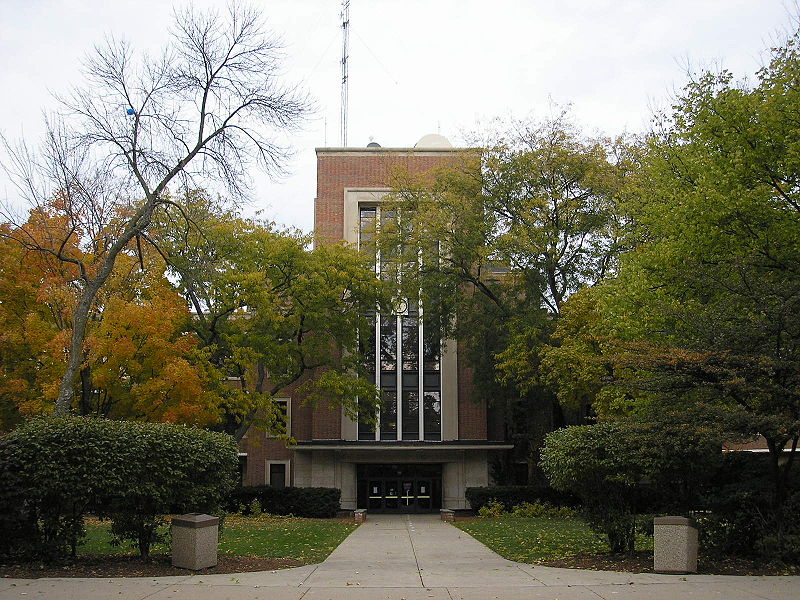Class levels determined by more than just placement tests
Teacher, parent, and self-evaluations also contribute to level recommendations
The process of placing incoming freshmen into different levels of classes goes beyond the December placement test, which causes varying levels of stress for 8th graders.
The placement test for the incoming class of 2023 was held Saturday, Nov. 17 for some middle schools (Sunset Ridge, Central, Washburne, and other students) and Saturday, Dec. 1 for the rest (Marie Murphy, Joseph Sears, and Wilmette Junior High).
“The placement exam is only one of the tools that we use to recommend classes for incoming students at New Trier,” said Eighth Grade Transition Coordinator Lori Worth.
“It is an effective way to assess our students’ skills in the basic areas, but we use several other methods to place students.”
Freshman Rosie Winter reflected, “The placement test seemed like no big deal, but I feel like it actually corresponds really well to the classes I’m in.”
In addition to the placement test, New Trier collects responses from junior high school teachers about students’ performance in junior high.
Worth explained, “They comment on critical thinking skills, class participation, homework completion, interpersonal skills, writing skills, independent learning ability, analytical skills and many more valuable learning aptitudes.”
Assistant Principal of the Northfield campus, Gail Gamrath, added that these detailed evaluations about students are all carefully considered in the placement process.
Additional evaluation includes a self-evaluation and a short general essay from the 8th graders, as well as a parent survey of their students’ strengths and weaknesses and key concerns, Worth said.
A common concern among parents and students, Gamrath said, is that the placement test does not reflect a student’s entire schedule and ability to balance all of his or her academic classes along with electives and extracurriculars.
This is why, Gamrath said, course decisions involve “conversations with parents about whether it’s okay that their kids are struggling, if they want them to be challenged, if it’s okay if they take a risk and get a C even when they might have to work really hard to maintain their grade.”
Recently, Gamrath observed, parents have been moving students down a level from their recommendations rather than pushing them to take higher level with awareness of the “race to nowhere” theory.
Instead of parents pushing their kids or students pushing themselves, which Gamrath said happens often in this community, “they’re being realistic about what they can take on — there’s only so much you can do before you can’t do anything well.”
Gamrath also emphasized that students “shouldn’t be stretching themselves in all core academics.”
The makeup of a student’s high school schedule, Gamrath said, depends on what kind of high school student they will be.
“It doesn’t have to be so absolute. I don’t believe in labels for kids,” Gamrath concluded. “They’re self-defeating; absolutes are not healthy.”
The profile of the class of 2018 shows that students move levels and classes all the time, placing the majority of students in a range of class levels, almost half taking both three and four levels and only three percent of the class taking all 4 level classes.
“The level recommendations that incoming freshmen are given are intended to guide their curricular choices for ninth grade. Families can make changes to the recommendations if they feel that their student will be more suited in a different level,” explained Worth.
Senior Anna Fellman said she ended up taking some classes a level down from her recommendations from the placement test, “so I wouldn’t be stressed out.”
While the school puts careful thought into each student’s recommendations, there is still the option to move levels based on student preference.
Fellman said that her sister felt pressure based on her own placement test results.
“She felt this need to place into all level fours and got super stressed,” she said.
Despite the stress around the four-hour long test, high school courses are not based only on these results.
“Coordinators and chairpersons from the core academic departments hand-place every incoming student,” Worth said, emphasizing the individual focus in the placement process.
While “all placements are a little bit of guesswork,” Gamrath said chairs and coordinators meet for two weeks to discuss placements.
Worth detailed a pilot program at two sender schools that invites families to have a 15 minute personal conference with a NT representative to pick freshman year courses.
“We think this will give families the most accurate information and the best academic counseling as they choose their courses for 9th grade,” Worth explained. “If the pilot goes well, we hope to continue this program next year with all of our sender schools.”
In addition, the school hosts events to help incoming students find out about various activities.
The countdown calendar for incoming high school families includes several transition events that help students and their families find out about opportunities at New Trier.
Academic Life details freshmen’s curricular choices, All About Electives allows students to see the elective offerings at the school, Understanding the Placement Process introduces the level system for families new to NT, and After the Academics shows students all their extracurricular opportunities.
These events are held throughout the year before students enter high school.
New Trier remains accessible to incoming families during the registration process after course recommendations and test scores are sent to incoming freshmen in early February.
According to Worth, “there is a helpline to answer families’ scheduling questions, and department coordinators and administrators spend a great deal of time speaking directly with families during the registration period and answering questions.”
Worth also explained that students meet with their advisers and teachers throughout 9th grade to make sure they end up in the right classes throughout high school.
“Very often,” Worth elaborated, “students have a better sense of themselves as learners as they progress through their freshman year, and they can work with their teachers and adviser to make appropriate choices for their later years.”







































